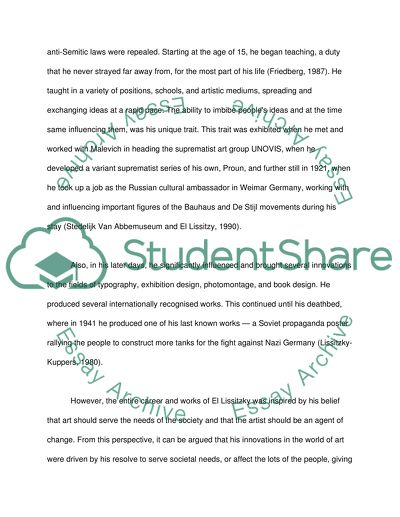Cite this document
(“El Lissitzky Essay Example | Topics and Well Written Essays - 3500 words”, n.d.)
Retrieved de https://studentshare.org/architecture/1528288-el-lissitzky
Retrieved de https://studentshare.org/architecture/1528288-el-lissitzky
(El Lissitzky Essay Example | Topics and Well Written Essays - 3500 Words)
https://studentshare.org/architecture/1528288-el-lissitzky.
https://studentshare.org/architecture/1528288-el-lissitzky.
“El Lissitzky Essay Example | Topics and Well Written Essays - 3500 Words”, n.d. https://studentshare.org/architecture/1528288-el-lissitzky.


